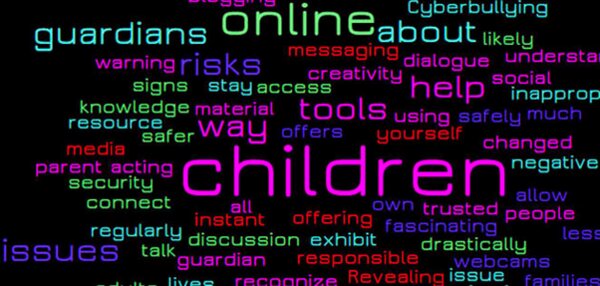Why Keeping Games Consoles Secure Should be a Priority
The rise in video games cannot be understated. What was once a public novelty has now evolved into a quintessential part of most homes, with children and teenagers firmly accustomed to the idea of playing video games. Unlike age ratings like for films and content, there is no official or recommended age for using games consoles
With online gaming becoming vastly popular, it’s never been more important for parents to decide if their child can safely use one. This guide is here to explain why ensuring your child’s gaming system should always be secure, and why overlooking that aspect could present some serious concerns.
Gaming and Consoles are Mainstays of 2024
Recent surveys show that most children aged 7 to 18 (68%) own a games console, with a further 9% having access to one, which is quite telling of the situation many parents and educators find themselves in. At least 53% of US households report owning at least one gaming console, with 26% claiming a ‘next-generation’ model. Not only are video games and consoles firmly ingrained in how kids interact with each other and form social connections, but they also shape their experiences.
As our culture has grown increasingly digitally connected in recent years, it’s no surprise that video gaming consoles have become ‘must-haves’ for today’s youth. With many kids in elementary school playing video games semi-regularly, it’s become a solid necessity to not feel isolated from their peers.
Multiplayer capabilities and a host of new releases making the rounds each year also make consoles highly coveted. Not only that, but the advancements in tech also make gaming more enticing, with keen gamers seeking new consoles and exclusive games to immerse themselves in. Therefore, it’s fair to say that consoles and gaming are here to stay, so parents and caretakers must ensure safe usage, rather than restrict access.
Security Concerns of Video Gaming
Amid all the discourse surrounding video games and their influence on children’s behavior, it cannot be denied that they can, if moderated and monitored appropriately, can have educational and social benefits. However, one thing that remains constant is the level of risk that lies with such proficient online gaming. Consoles introduce risks, ranging from interconnectivity with strangers in online, often ‘lawless’ chatrooms and forums, to a plethora of other cyber security risks and privacy breaches.
Providers and network administrators have their part to play in ensuring the robustness of their infrastructure. They can use mechanisms like vulnerability patching and penetration testing for weaknesses, although each user has to exercise vigilance. Console developers, meanwhile, are often tasked with rigorously securing networks and infrastructure, yet bad actors can still slip through the cracks. Sony recently suffered a series of hacks and security breaches which compromised user data, thus emphasizing the need for bolstering defenses.
Risks and Threats Associated with Gaming Devices
Games consoles introduce a range of potential cyber risks which can be concerning for parents. These include but are not limited to the following:
Personal data collection – Like all internet-connected devices, consoles and games can collect and transmit large amounts of user data. From usernames and passwords to usage data and communications, this information needs safeguarding with precision to prevent it from being used fraudulently or maliciously.
Device takeovers – Unwarranted hacks can give attackers full control over the console and any other connected devices. Remote hackers can compromise a device and expose users to unauthorized or inappropriate content.
Account takeovers – Attackers with stolen login credentials can access user accounts, steal personal information, make fraudulent purchases with saved payment cards, exploit associated email accounts, and much more.
Communication platforms – Instant messaging, and voice chat features can expose vulnerable children to bullying and harassment. If not supervised, kids can become victims of exploitative cyberbullying and social engineering attacks.
Malware risks – Viruses, spyware, and other malware can ‘brick’ games and consoles or render them inaccessible. These can often materialize innocuously without arousing suspicion from users.
Network risks – Gaming on public Wi-Fi networks – or those with poor, weak network security – leaves consoles vulnerable to eavesdropping and MitM (man-in-the-middle) cyber attacks.
This year alone we have seen the aforementioned attacks on the PlayStation Network, as well as a large-scale data leak on the Xbox servers. As these are two of the industry’s most recognizable brands, it only proves that as consoles grow in popularity, they can become more appealing targets for cybercriminals. Therefore, personal safety and security is essential.
Securing Gaming Devices and Accounts
While there are undoubtedly risks when using gaming consoles, they are, fundamentally, no different than those that exist when using the Internet. This type of technology is increasingly available and beneficial, so the steps that parents can take to minimize threats bear many similarities to moderating children’s Internet usage and access.
As a baseline level, consider implementing these controls to keep your kids safer when using online game consoles.
Use Strong Passwords and MFA
Establishing strong, unique passwords – using undecipherable, random strings of letters, numbers, symbols and capitalizations – will make initial barriers harder to break. Avoid using birthdays, pet names, or other easy-to-guess information in passwords.
Keep this data safe and bolster it by allowing multi-factor authentication (MFA) to validate login attempts. It might seem overly protective, but this will prevent usernames and passwords from being compromised.
Limit Personal Info
When setting up accounts, make sure that only essential information is provided. Consider leaving phone numbers, locations, school names, and other identifiable information fields blank, and restricting the access that third-party applications have to this data. Consider also masking real names on user profiles to avoid being targeted or identified.
Monitor Friends and Chats
If your child interacts with friends online, there’s a good chance that, over time, they may encounter mutual friends and broaden their friendship circle online. However, listen carefully to what they say. Take a fervent interest in what they talk about and the interactions they mention in conversation.
If they seem ‘off’ or dissociate, it could indicate that they are interacting with someone anonymous who is worrying or stressing them. Cyberbullies and predators lurk in gaming comms channels, so pay close attention. If necessary, step in and enable parental controls and enhance privacy settings.
Patch Networks and Consoles
Ensure your home Wi-Fi uses modern WPA2 or WPA3 encryption protocols and a long, complicated pre-shared key (password). If relevant, consider installing a separate VPN to offer more robust, controlled connections.
Keep firmware updated on the console itself as well as routers and other network devices, applying all new security patches and revisions when prompted.
Disable remote administration capabilities and UPnP on routers, and, where possible, connect consoles to routers using ethernet cables. This stabilizes the connection between the console and the Internet.
Beware of Social Engineering
Kids may instinctively try to keep their gaming activities secret from parents, particularly if they find it to be an immersive escape from daily life. However, it’s important to bridge that gap where possible and educate them – not forcefully but, rather, openly – on attempts to manipulate them.
Teach them ways to identify attempts to steal login credentials or sensitive data, and emphasize that divulging this could pose a security risk. Phishing emails, notifications, and links can be dangerous, so they should take time to assess their legitimacy before clicking them.
It will help exponentially if your child feels comfortable maintaining autonomy when using their console but flagging up any suspicions to you with confidence, at which point you can intervene without reprimanding them.
While no gaming console security is foolproof, combining the security steps outlined above will significantly reduce the attack surface. Parents must manage and monitor console usage carefully but not to the point where it becomes disruptive or invasive to their child’s enjoyment. Stay alert for new threats and make cyber safety an ongoing conversation with your young gamer(s), as they should feel empowered to enjoy the gaming experience without becoming desensitized to it because of security concerns.
If your kids want to find their own solutions to any challenging parts of the games they are playing, you can support them to navigate the web safely by using Safe Search Kids. Using Safe Search Kids means that you don’t have to worry about your kids stumbling upon content that isn’t appropriate for them.




 Author bio: Cora Gold is the Editor-in-Chief of women’s lifestyle magazine,
Author bio: Cora Gold is the Editor-in-Chief of women’s lifestyle magazine, 



